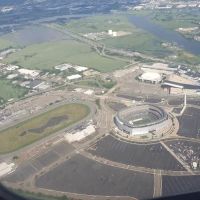Harbor Estuary Introduce
When we talk about "Harbor Estuary" in the context of Newark, NJ 07114, USA, we're referring to a vital part of the much larger New York-New Jersey Harbor Estuary. This isn't a singular "park" in the traditional sense with swings and slides, but rather an intricate and dynamic living ecosystem comprised of a vast network of waterways where freshwater from rivers like the Passaic, Hackensack, and Hudson meets and mixes with saltwater from the Atlantic Ocean. Designated as an "Estuary of National Significance" in 1988, this region is a cornerstone of both natural biodiversity and human activity.
For New Jersey locals, particularly those in and around Newark, the Harbor Estuary is a critical, often unseen, element of their daily lives. It impacts everything from the air we breathe and the water we use to the economy and recreational opportunities available. It's an ecological powerhouse, creating more organic matter annually than comparably sized areas of forest, and serves as a vital breeding ground for fish and shellfish. While facing challenges from historical pollution and urbanization, ongoing efforts by programs like the Harbor Estuary Program (HEP) are dedicated to its protection and restoration, aiming to "protect and restore the estuary's natural resources and to establish and maintain a healthy and productive harbor ecosystem." Understanding this complex natural system is essential for any resident of New Jersey who cares about their local environment, economy, and quality of life. It’s a natural wonder that, despite its urban setting, provides invaluable environmental benefits and recreational potential for those who know how to appreciate it.
The New York-New Jersey Harbor Estuary, encompassing Newark, NJ 07114, USA, is a vast and complex system of interconnected waterways rather than a single, distinct geographical "park." Its location is defined by the confluence of major rivers (like the Hudson, Passaic, Hackensack, and Raritan) with the Atlantic Ocean, particularly flowing into Newark Bay, Upper New York Bay, and Raritan Bay. This makes it inherently accessible from numerous points across New Jersey.
For locals in Newark, direct access to the Estuary is primarily through the waterfronts of Newark Bay and the lower Passaic River, which runs through the city. While specific public parks or access points within the 07114 zip code that are solely dedicated to the "Harbor Estuary" might be limited to industrial or commercial port areas, numerous community initiatives and existing green spaces in Newark aim to improve public access to these waterways. These efforts involve developing waterfront parks, walking trails, and boat launches where feasible.
Accessibility to the wider Estuary system from Newark is facilitated by New Jersey's extensive road network, including major highways that lead to various coastal and riverfront parks, marinas, and environmental centers throughout Bergen, Hudson, Union, Middlesex, and Monmouth counties. Public transportation, including NJ Transit buses and trains, connects Newark to many of these waterfront areas and other parts of the Estuary's watershed. The focus of the Harbor Estuary Program includes "improving public access to the waters of the estuary and the quality of experience at public spaces along the waterfront." While industrial and shipping activities are prominent in Newark Bay, efforts are continuously being made to balance these uses with opportunities for recreational enjoyment and ecological appreciation for the local community. Therefore, while not a single entry point, the Estuary is a pervasive natural feature with increasing opportunities for engagement and access for New Jersey residents.
The "services" offered by the New York-New Jersey Harbor Estuary are primarily ecological, economic, and recreational in nature, rather than commercial services typically found in a managed park. This vast natural system provides invaluable functions and opportunities for the residents of New Jersey:
Ecological Habitat and Biodiversity: The Estuary provides a rich diversity of habitats, including salt marshes, mudflats, sandy beaches, oyster reefs, and wooded swamps. It is home to over 260 species of fish, birds, and other wildlife, serving as a critical breeding ground and migratory stopover. This natural service contributes significantly to regional biodiversity and environmental health.
Water Quality Improvement: Estuarine wetlands act as natural filters, removing sediment, contaminants, and pollutants from water flowing from the land before it reaches the ocean. This vital ecological service helps in maintaining and improving water quality within the harbor and beyond.
Coastal Resiliency and Flood Protection: Wetlands and natural shorelines within the Estuary act as "storm buffers" and provide flood control, minimizing damage caused by hurricanes and other large storms. This natural service is crucial for protecting densely populated coastal communities in New Jersey.
Recreational Opportunities: The Estuary offers a wide array of recreational services, including boating (kayaking, sailing, motorboating), fishing, and sightseeing from waterfront parks and pathways. While "No Swimming" signs might be present in certain areas due to water quality advisories (such as parts of Newark Bay), efforts are ongoing to improve water quality to meet "fishable/swimmable" goals where attainable.
Economic Contribution (Port and Maritime): The deep, calm waters of the Harbor Estuary make it one of the busiest ports in the United States, facilitating cargo shipping, cruise ship operations, and ferry services. This economic activity provides numerous jobs and supports regional commerce, impacting countless New Jersey families.
Educational and Research Platform: The Estuary serves as an "excellent research laboratory for scientists and students alike," offering opportunities for outdoor education, marine science, and understanding the urban environment. Programs by organizations like the Greater Newark Conservancy facilitate this learning.
Community Engagement Programs: The New York-New Jersey Harbor Estuary Program (HEP) and partner organizations regularly offer mini-grants and support community-led projects focused on water quality monitoring, habitat restoration, and public awareness campaigns about the Estuary's health.
These collective "services" highlight the immense value and multifaceted benefits the Harbor Estuary provides to the people and environment of New Jersey.
The New York-New Jersey Harbor Estuary, particularly the portion affecting Newark, NJ, boasts a range of fascinating features and highlights that underscore its immense ecological, historical, and economic significance for locals:
Complex System of Waterways: At its core, the Estuary is an incredibly intricate network of bays (Newark Bay, Upper and Lower New York Bay, Raritan Bay, Jamaica Bay), rivers (Hudson, Passaic, Hackensack, Raritan, East River), and connecting kills (Arthur Kill, Kill Van Kull). This complex hydrology creates unique brackish water environments that are constantly influenced by both tidal flows and freshwater input.
Biodiversity Hotspot in an Urban Setting: Despite its heavily urbanized and industrialized surroundings, the Estuary is a surprisingly rich "living ecosystem." It supports "over 260 species of fish, birds, and other wildlife," including diverse habitats like salt marshes, mudflats, and oyster reefs. This makes it a critical ecological corridor and a testament to nature's resilience.
Major International Port: The Harbor Estuary is one of the world's most intricate natural harbors and "one of the busiest ports of the United States." This includes Port Newark, a major hub for containerized cargo, which is vital for the regional and national economy, providing numerous jobs and facilitating trade that directly benefits New Jersey residents.
Historical Significance: The Estuary has been a crucial waterway since colonial times. Its deep channels, some naturally 17 feet deep, have been extensively modified and deepened (to 45 feet) to accommodate modern shipping, often requiring "blasting of bedrock." This industrial transformation reflects centuries of human interaction with this powerful natural system.
Ongoing Restoration and Conservation Efforts: A significant highlight is the dedication to its protection and restoration through initiatives like the New York-New Jersey Harbor Estuary Program (HEP). This partnership of federal, state, and local agencies, scientists, and environmental advocates works to "reduce pollution, restore habitats and biodiversity, improve public access," striving to make the waters fishable and swimmable where attainable.
Educational and Community Engagement Opportunities: The Estuary serves as an active "research laboratory" and a platform for public education. Organizations like the Greater Newark Conservancy run programs focusing on the Newark Bay Watershed, engaging teachers and students in understanding and protecting this local resource. Public access initiatives also aim to create more opportunities for communities to connect with the waterfront.
Storm Resiliency Provider: The natural features within the Estuary, particularly its wetlands, play a crucial role in "preventing flooding and minimizing damage caused by hurricanes and other large storms," acting as natural buffers for waterfront communities.
These features collectively highlight the Harbor Estuary's complex nature and its profound importance to the ecological health, economic prosperity, and recreational life of New Jersey.
The New York-New Jersey Harbor Estuary, as a vast natural and managed system, doesn't offer "promotions" or "special offers" in the commercial sense. Instead, its "offers" come in the form of free access to public spaces, educational opportunities, and grants for community involvement in its health and restoration. These "offers" are invaluable public goods rather than commercial incentives.
Free Public Access and Recreation: The most significant "offer" is the inherent opportunity for free recreation in various parts of the Estuary. This includes public access points for activities like boating (kayaking, sailing), fishing, and walking along waterfront parks and pathways. Efforts are continuously made to improve and expand this public access, particularly in urban areas.
Community Events and Educational Programs: Organizations involved in the Harbor Estuary Program (HEP) and local environmental groups frequently host free public events, workshops, and educational programs. These can include:
- City of Water Day: An annual event that often features free boat tours, kayaking, and educational activities designed to connect people with the Estuary's waters.
- Watershed Workshops: Programs like those offered by the Greater Newark Conservancy teach about the water cycle, conservation, and the Newark Bay Watershed, often targeting educators and community members.
- Public Meetings and Forums: Opportunities for residents to learn about the Estuary's health, ongoing restoration efforts, and provide input on future management plans, fostering a sense of ownership and stewardship.
Grant Opportunities for Community Projects: The NY/NJ Harbor & Estuary Program often offers grants to local organizations and community groups for projects that support climate resiliency, habitat restoration, and public engagement within the Estuary, particularly in disadvantaged communities. While these are not for individuals, they represent a significant "offer" for communities to actively participate in the Estuary's improvement.
Free Educational Resources: Various public and non-profit organizations provide free educational materials, guides, and online resources about the Estuary's ecology, history, and environmental challenges. These empower locals to learn more about this vital resource.
To discover specific free events, educational opportunities, or ways to get involved, New Jersey residents should consult the websites of the New York-New Jersey Harbor Estuary Program (often managed by the Hudson River Foundation), the New Jersey Department of Environmental Protection (NJDEP), local environmental non-profits like NY/NJ Baykeeper, and municipal recreation departments in waterfront communities. These resources are the best places to find out how to take advantage of the many "offers" provided by this remarkable natural system.
As the "Harbor Estuary" refers to a vast natural system and a collective of environmental programs rather than a single park with a direct contact office in Newark, the relevant contact information points to the key organizations involved in its management, conservation, and public engagement. For Newark, NJ 07114 residents, inquiries related to the Estuary would typically be directed to these entities:
New York-New Jersey Harbor Estuary Program (HEP): This program is a central coordinating body for the Estuary's health and restoration. While it doesn't have a direct public phone line for general park inquiries, information can be found through its managing body.
- Managed by: Hudson River Foundation (for the HEP). Their general contact information is usually available on their website (www.hudsonriver.org/estuary-program).
- General inquiries related to HEP: Rob Pirani (Program Director) or Rosana Pedra Nobre may be reached via email for specific program questions (emails often provided on grant announcements or program pages).
New Jersey Department of Environmental Protection (NJDEP): For environmental concerns, regulations, or information related to New Jersey's waterways, the NJDEP is the primary state agency.
- 24-Hour Toll Free Hotline for environmental emergencies/spills: 1-877-WARNDEP (1-877-927-6337).
- General NJDEP contact information: Found on their official website (www.nj.gov/dep).
NY/NJ Baykeeper: A prominent non-profit organization dedicated to protecting the health of the local waterways through advocacy, restoration, and public access. They are often a great resource for community members.
- Address: 1222 Route 36 Suite #4, Hazlet, NJ 07730 (This is their main office, not a direct Estuary location).
- Phone: 1-732-888-9870 (Often used for reporting polluters or general inquiries).
- Email: mail@nynjbaykeeper.org
- Website: www.nynjbaykeeper.org
Greater Newark Conservancy: For educational programs and community engagement focused on the Newark Bay Watershed specifically.
- General Contact: Check their website (e.g., www.cityofnewark.org/departments/parks-recreation-cultural-affairs/greater-newark-conservancy - specific contact info may vary by program).
For general public access points like local waterfront parks in Newark, residents can also consult the City of Newark's Department of Parks, Recreation and Cultural Affairs.
The New York-New Jersey Harbor Estuary, particularly the segment flowing through and impacting Newark, NJ, is profoundly suitable for locals, serving as an indispensable resource for environmental health, economic vitality, and burgeoning recreational opportunities. Its suitability stems from its multifaceted contributions to the quality of life in this urbanized region.
Firstly, for any resident concerned about their environment, the Estuary is a living, breathing testament to nature's resilience and the critical importance of conservation. It’s not just a body of water but a complex ecosystem that provides essential services like filtering pollutants, supporting diverse wildlife, and acting as a natural buffer against coastal storms. Understanding and engaging with this natural system helps locals appreciate the delicate balance of their urban environment and empowers them to participate in its ongoing recovery and protection.
Secondly, the Estuary is a cornerstone of the regional economy, particularly through the Port Newark-Elizabeth Marine Terminal, one of the busiest in the nation. This economic engine directly provides jobs and fosters commerce that benefits countless New Jersey families. For locals, recognizing the Estuary’s economic significance means understanding a key driver of their regional prosperity and the logistical backbone that connects their community to global markets.
Thirdly, while not a traditional "park" in the green space sense, the Estuary offers increasing opportunities for recreation and connection with nature. Through dedicated efforts by the Harbor Estuary Program and local groups, public access points are being improved, allowing for activities like fishing, kayaking, and simply enjoying waterfront views. These opportunities provide vital avenues for stress relief, physical activity, and appreciating the unique urban seascape that defines much of New Jersey's eastern edge. Events like City of Water Day further highlight and expand these recreational possibilities, actively inviting locals to explore their aquatic backyard.
Finally, the Estuary serves as an incredible outdoor classroom. Educational programs from organizations like the Greater Newark Conservancy help locals, especially younger generations, learn about watershed health, marine science, and environmental stewardship right in their own community. This fosters an informed and engaged citizenry, vital for the Estuary's long-term health.
In essence, the Harbor Estuary is a critical, integrated component of life for New Jersey locals. It offers ecological stability, economic prosperity, and growing recreational and educational avenues, making it an irreplaceable and suitable "place" that directly contributes to the well-being and vibrancy of the community.
Harbor Estuary Photos
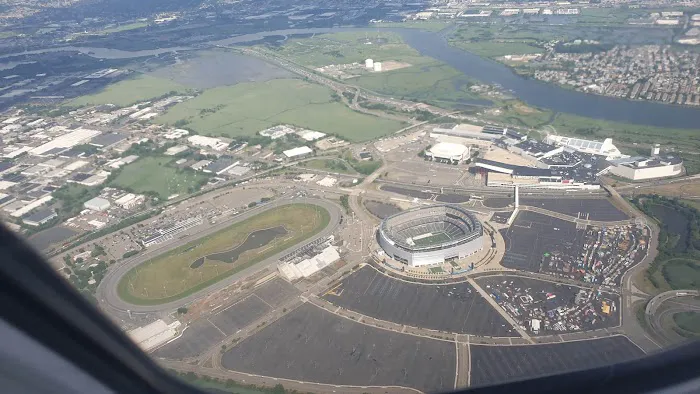
Harbor Estuary Location
Harbor Estuary
Newark, NJ 07114, USA
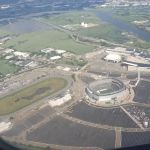 Harbor Estuary
Harbor EstuaryNewark
 Bobbie Lewis, Jr. Playground
Bobbie Lewis, Jr. PlaygroundRichmond Terrace &
 Richmond Terrace Park
Richmond Terrace Park2319
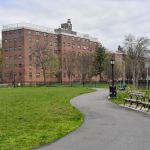 The Big Park
The Big ParkGrandview Ave &
 Graniteville Quarry Park
Graniteville Quarry Park2134
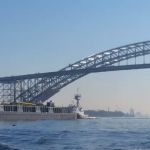 Shooter's Island
Shooter's IslandShooters Island
 Egbert Triangle
Egbert TriangleWillowbrook Rd
 Forest Grove
Forest Grove2577 Forest Ave
 Mariner's Marsh Park
Mariner's Marsh Park3418 Richmond Ter
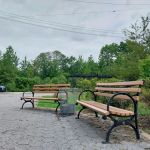 Nosirdzhon Nazarali, The Corporate Park of Staten Island
Nosirdzhon Nazarali, The Corporate Park of Staten IslandSouth Ave
 Graniteville Swamp Park
Graniteville Swamp ParkGoethals Rd. N &
 Father Macris Park
Father Macris ParkLamberts Lane &
 Joseph Manna Park
Joseph Manna Park2577 Forest Ave
Harbor Estuary Reviews
More Scenic Spot
 Bobbie Lewis, Jr. Playground4.0 (70 reviews)
Bobbie Lewis, Jr. Playground4.0 (70 reviews)Richmond Terrace &, Harbor Rd, Staten Island, NY 10303, USA
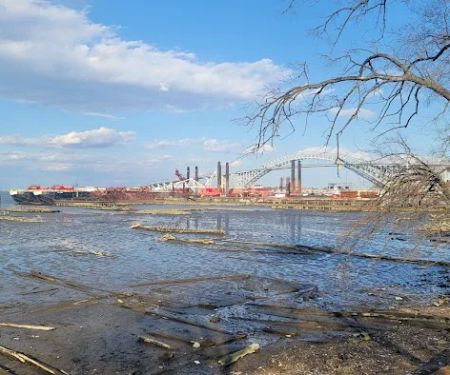 Richmond Terrace Park4.0 (64 reviews)
Richmond Terrace Park4.0 (64 reviews)2319, 2800 Richmond Ter, Staten Island, NY 10303, USA
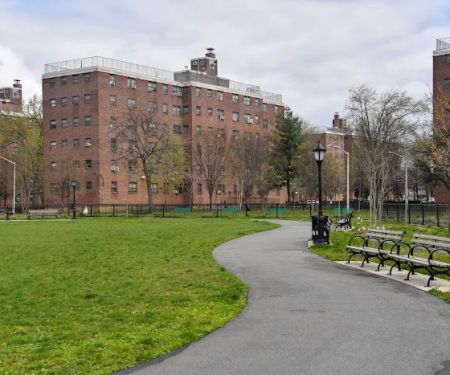 The Big Park4.0 (292 reviews)
The Big Park4.0 (292 reviews)Grandview Ave &, Continental Pl, Staten Island, NY 10303, USA
 Graniteville Quarry Park3.0 (26 reviews)
Graniteville Quarry Park3.0 (26 reviews)2134, 1890 Forest Ave, Staten Island, NY 10303, USA
 Shooter's Island4.0 (5 reviews)
Shooter's Island4.0 (5 reviews)Shooters Island, Staten Island, NY 10303, USA
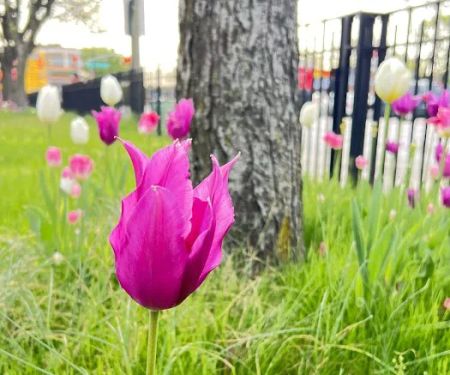 Egbert Triangle3.0 (12 reviews)
Egbert Triangle3.0 (12 reviews)Willowbrook Rd, Staten Island, NY 10302, USA
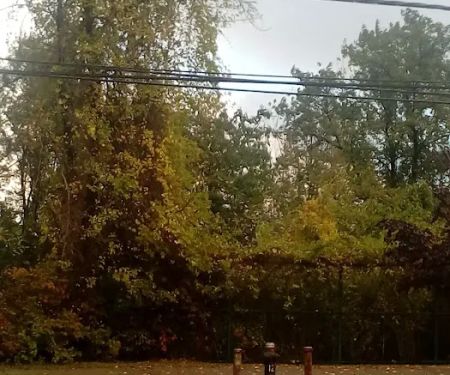 Forest Grove4.0 (3 reviews)
Forest Grove4.0 (3 reviews)2577 Forest Ave, Staten Island, NY 10303, USA
 Mariner's Marsh Park3.0 (42 reviews)
Mariner's Marsh Park3.0 (42 reviews)3418 Richmond Ter, Staten Island, NY 10303, USA
 Nosirdzhon Nazarali, The Corporate Park of Staten Island4.0 (3 reviews)
Nosirdzhon Nazarali, The Corporate Park of Staten Island4.0 (3 reviews)South Ave, Staten Island, NY 10314, USA
 Graniteville Swamp Park4.0 (27 reviews)
Graniteville Swamp Park4.0 (27 reviews)Goethals Rd. N &, Forest Ave, Staten Island, NY 10303, USA
 Father Macris Park4.0 (226 reviews)
Father Macris Park4.0 (226 reviews)Lamberts Lane &, Fahy Ave, Staten Island, NY 10314, USA
 Joseph Manna Park4.0 (7 reviews)
Joseph Manna Park4.0 (7 reviews)2577 Forest Ave, Staten Island, NY 10303, USA
Categories
Popular Camping Sites
 Randolph Park4.0 (40 reviews)
Randolph Park4.0 (40 reviews) Residence Inn Saddle River4.0 (596 reviews)
Residence Inn Saddle River4.0 (596 reviews)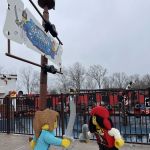 LEGOLAND New York entrance3.0 (8 reviews)
LEGOLAND New York entrance3.0 (8 reviews) Jemmy's Dog Run4.0 (281 reviews)
Jemmy's Dog Run4.0 (281 reviews)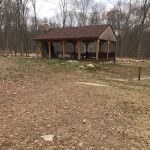 Roosevelt Forests Gazebo0.0 (0 reviews)
Roosevelt Forests Gazebo0.0 (0 reviews) Stamford Dog Park4.0 (217 reviews)
Stamford Dog Park4.0 (217 reviews)Trending Camping Blog Posts
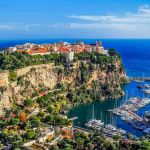 Top Group Travel Destinations in Europe: Best Places for Group Vacations
Top Group Travel Destinations in Europe: Best Places for Group Vacations How to Get Involved in Travel Clans for Social Travel: Explore Group Travel Opportunities
How to Get Involved in Travel Clans for Social Travel: Explore Group Travel Opportunities Best Travel Clans for Sustainable Travel
Best Travel Clans for Sustainable Travel Best Group Vacation Destinations for Friends: Ultimate Travel Ideas
Best Group Vacation Destinations for Friends: Ultimate Travel Ideas Travel Clans for Solo Travelers Looking for Company: Join Unique Travel Communities
Travel Clans for Solo Travelers Looking for Company: Join Unique Travel Communities Best Travel Clans for Women Traveling Together
Best Travel Clans for Women Traveling Together 
